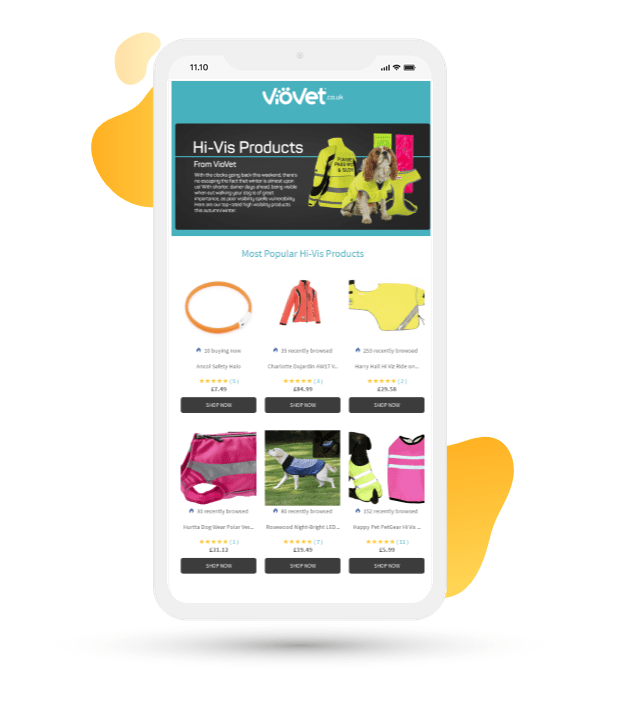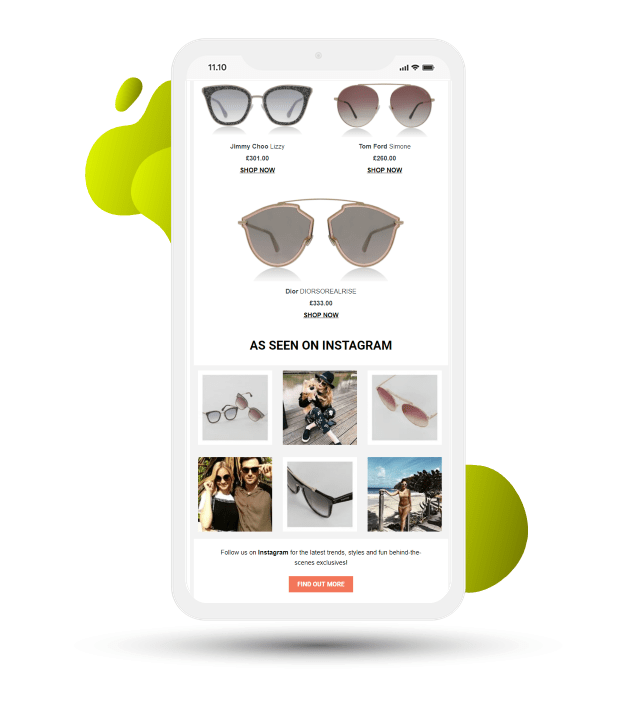learning path
The Complete Guide To Social Proof

What is social proof?
When you find yourself joining in a standing ovation at the theatre without a second thought, or when you choose a busy restaurant over the empty one next door – despite the long waiting list – you are experiencing the effects of social proof.
Social proof – also known as social influence – is the psychological and social phenomenon where we mimic the actions of others in order to behave correctly. The term was coined by Dr. Robert Cialdini in his bestselling book Influence: The Psychology of Persuasion. Cialdini found that when making a decision, people are guided by six principles of influence:
- Consistency – the desire to be consistent with what we have already done or said.
- Reciprocity – the desire to give back to someone who gave you something.
- Authority – the desire to follow the expert.
- Consensus – the desire to follow the lead of others.
- Scarcity – the desire to have things that are rare.
- Similarity – the tendency to like similar others.
Social proof in digital marketing
In the context of retail, eCommerce and travel, social proof marketing describes the various ways marketers can increase conversions by reassuring customers that they are buying the right product. These include ratings and reviews, customer testimonials, and crowdsourced product recommendations.
Research shows that you should take social proof seriously as a digital marketing tactic. More than 1 in 3 customers won’t purchase if an online store doesn’t show product ratings and reviews.
Social proof is the secret ingredient you should be using to keep the attention of potential customers who might otherwise bounce without completing a purchase.
Why should I use social proof in my marketing?
Overwhelmed by choice, shoppers demand an exceptional customer experience where decision-making is quick and easy. It’s crucial for retailers to serve customers the most relevant products, and provide as much useful information as possible at the point of purchase.
Used effectively, social proof marketing improves the customer journey, increases conversions and builds trust in your brand – all without investing a great deal of time and money in content creation.
1. Build trust and credibility with objective opinions
Objective opinions – whether these come from satisfied customers or third-party industry experts – reassure customers that your brand can be trusted to consistently provide top notch products and services.
Most consumers believe that content shared by other shoppers is more reliable than advertising from brands.
Leverage the trust built by social proof to foster loyal, returning customers.
2. Give customers an additional reason to buy your product
Social proof adds urgency and makes stock more desirable without changing anything about the product or the price. Demonstrating that a product is rated highly, or has proven to be popular with similar shoppers, could be the crucial factor in preventing a bounce or an abandoned cart.
Use social proof to increase conversions, reduce abandonment and cross-sell your trending products.
3. Simplify the buying process
Shoppers today are plugged into multiple channels at the same time, and often consume content from multiple screens simultaneously. When we feel overloaded, we easily get distracted by something else and stop browsing.
By reassuring a customer about the product they are viewing, you reduce the mental effort needed to make a decision. Most of us would rather choose a highly-rated or popular product than have to weigh up lots of options.
Adopt social proof to reduce friction and guide customers towards a purchase.
4. Reduce your online returns rate
Social proof content can help you reduce returns of online products. User generated photos and reviews give prospective customers a clear idea of how products perform in real life, so they don’t buy the wrong product for their needs.
Deploy social proof to help customers make informed decisions.
How to add social proof to website and emails
We’ve seen why you should consider adding social proof to your digital marketing tool kit. Now let’s delve into what types of social proof are out there, and how you can use them in your cross-channel marketing strategy.
There are five main types of social proof:
- Peer social proof: For example, recommendations from people in your network.
- User social proof: Including user reviews and testimonials from customers who have purchased the product.
- Wisdom of the crowd: Such as highlighting trending and popular products.
- Celebrity social proof: Usually an endorsement from a well-known person.
- Expert social proof: For example, endorsement from a qualified third party.
Here are some practical ways to implement these types of social proof in your marketing:
Peer social proof
When faced with a decision, consumers look for unbiased sources of information. People are also more inclined to be influenced by the people closest to them – their friends and family.
For digital marketers, the challenge is that peer recommendations are difficult to track as they may be posted privately in ‘Dark Social’ channels such as messaging apps or private profiles.
However, you can proactively incorporate peer social proof into your strategy with User Generated Content (UGC):
- Promote your social media presence. Tell customers about your presence on social media platforms and share your branded hashtag. Include social sharing buttons in product content and post-purchase emails.
- Inspire your customers by telling them what content you are looking for e.g. a selfie featuring your product. You can also incentivize customers to share content in exchange for discounts or the chance to win a prize.
- Maximize the reach of UGC by incorporating real-time social media content in your website and email channels.
User social proof
The most common way to deploy social proof in marketing is by displaying the opinions of existing customers who have already used your products.
It’s one thing knowing that other people have bought a product – it’s another knowing that someone has used it and was satisfied enough to share their positive feelings.
There are some straightforward ways to incorporate customer feedback into your content:
Use a social proof widget to display ratings and reviews on your web pages. Feedback on product level pages reassures potential customers at the moment of purchase, while showcasing positive ratings and reviews on your homepage builds trust with first-time shoppers.
Enhance automated lifecycle emails by showing product ratings and reviews to give shoppers more incentive to click through. This includes cart and browse abandonment emails, where a high star rating may provide the final push to nudge a customer towards a purchase.
Supplement product recommendations with ratings and reviews. When serving customers with trending product feeds or personalized recommendations, positive customer ratings makes products appear even more desirable.
Wisdom of the crowd
Wisdom of the crowd is based upon the assumption that a group of people collectively makes better decisions than the individual. Highlighting popular products plays on FOMO (Fear of Missing Out) and reassures us that we are following the consensus.
Use crowdsourced data to show your most-viewed or most-purchased products. Highlight trending products across your eCommerce store – on your website homepage, product pages and navigation. Increase website conversions by showing customers your most desirable products without them having to search.
Enhance triggered emails with related products. When sending a cart or browse abandonment email, cross-sell your trending products by letting customers know what other shoppers bought along with this item.
Personalize product recommendations based on a user’s behavior. Refine trending product feeds by selectively serving best selling products from a customer’s favorite category. By increasing the relevance of suggested products, you will help shoppers discover items they might like.
Combine product recommendations with scarcity. Introduce a sense of urgency to the buying process by showing how many times a product has been viewed or purchased recently. Real-time relevance plays on shoppers’ fear of missing out, and reassures customers that they are following a consensus. This tactic works especially well in the travel sector, where consumers know that there is a finite number of seats or rooms available.
Celebrity / influencer social proof
Celebrity social proof / influencer marketing comes in two flavors:
Paid endorsements: A celebrity or influencer explicitly endorses your product in exchange for a fee.
Unpaid endorsements: A celebrity or influencer is spotted using your product simply because they like it.
This works well because shoppers trust their favorite celebrities’ and influencers’ judgement, or want to imitate their look.
Here’s how you can use celebrity social proof and influencer marketing:
Gift products to celebrities in exchange for a review or photo. Be sure to carefully choose celebrities who are aligned with your customers’ interests and values. When a celebrity endorses your product, share the news with your customers via your email, blog and social networks.
Inspire your customers by suggesting how to recreate a celebrity’s look. Create a guide showing shoppers how they can imitate the style of their favorite celebrity using your own products.
Work with micro-influencers. Micro-influencers are everyday consumers with a social media following of 1,000 to 100,000. Find out which influencers your customers follow, interact with them on the social media platform they use, and send them relevant products for review. We found that members of Generation Z are particularly interested in influencer marketing (although they don’t always trust what they see!)
Expert social proof
When third-party industry experts endorses your brand or products, this plays into consumers’ desire to follow authority. You can emulate the effect of expert social proof by displaying certificates, awards and badges from trusted third-parties.
Reassure first-time shoppers by displaying awards and certifications on your homepage, in your website footer or even in your navigation.
Create a dedicated ‘About Us’ page displaying your certificates and accolades.
Include badges and award logos in your welcome emails to reassure new customers and encourage click throughs.
A note on social proof in travel
When buying something as important – and expensive – as a vacation, customers need to be sure that they are making the right choice. To turn browsers into bookers, travel merchants must provide customers with everything they need to make an informed decision.
Modern travelers are used to consulting websites such as TripAdvisor when shortlisting travel options, and expect to see ratings and reviews before making a decision.
Research from Reevoo shows that displaying reviews significantly increases conversion rates for travel companies – and conversion rates only get higher as the volume of reviews increases.
The scarcity principle is also particularly relevant for travel companies – when customers know that there are limited places available, they are more likely to be influenced by product popularity messaging.
Social proof solutions
Social proof is a proven tactic for boosting your conversion rate and improving the user experience. A good social proof solution allows you to leverage the impact of the psychological phenomenon across all channels, in real-time.
Here’s what you should look for in a social proof solution:
Provide product popularity data
To be able to display up-to-date trending product information, you will need a solution that collects real-time browsing and purchase data, and uses these insights to serve the most relevant content.
Ability to serve real-time social media content across web and email
To leverage UGC from your happy customers, you will need a platform that makes it easy to pull social media into your web and email content. Consider a solution that allows you to define how and where this content appears, with no coding required.
Show consistent, timely content across email, social and web
By aligning content across as many channels as possible, you ensure a seamless user journey. Choose a platform that allows you to show consistent social proof content in real-time across all channels and devices.
Personalize product recommendations
To maximize conversions, opt for a solution that allows you to use customer behavior to selectively display the best selling products from a customer’s favorite category.
Integrate with ratings and review providers
Your cross-channel social proof solution should be able to integrate easily with the most common rating and review platforms or your inhouse solution to display feedback in real time across email and eCommerce sites.
How are eCommerce and travel brands using social proof?
Pet supplies provider VioVet added product ratings and reviews to product recommendations, cart and browse abandonment emails. The emails, which automatically display the latest customer ratings, resulted in a 19% increase in click-throughs.

Buyagift added social proof to their automated discount emails, speeding up the the buying process by displaying how many people have bought or browsed that particular product recently. Since implementing social proof, Buyagift has seen a 13% increase in sales.

MyOptique Group automatically pulls product and service reviews from the Trustpilot API and incorporates them across channels. The eyewear retailer also added social proof to its product recommendations and triggered emails for its Sunglasses Shop brand through the inclusion of user-generated content pulled from Instagram, Twitter and Pinterest. The social proof feature has had over 5.7 million impressions since implementing.

A final word on social proof
Social proof is a win-win online marketing tool for you and your customers. Used correctly, social proof strategies can boost your conversion rate, help you avoid abandoned carts and build trust in your brand. Shoppers can easily make an informed decision based on the wisdom of the crowd, peers and industry experts.
With our clients and customer review provider partners, we have seen how social proof delivers results across channels.
Social proof is the cost-effective tactic that every marketer should have up their sleeve to help customers feel confident in their purchase decision and ultimately produce more satisfied customers and drive conversions.
Find out more about our cross-channel social proof solution,
FAQs
Why is personalization important in ecommerce?
With personalization tactics such as product recommendations and dynamic content, eCommerce businesses can deliver relevant experiences for each shopper based on their purchase and browse data and contextual data such as their location. This helps shoppers find products they desire faster, which drives loyalty and revenue.
What is the biggest advantage of personalization?
Today’s consumers want a convenient, friction-free experience that is tailored to their needs. The biggest advantage of personalization is that it empowers businesses to deliver the relevant experience consumers crave, which increases loyalty, retention and revenue. In fact, on average our customers increase online revenue by 31% with Fresh Relevance.
How do you implement eCommerce personalization?
The best way to implement personalization is to invest in a dedicated, best-of-breed personalization platform. This requires integration with existing technology, such as your ESP, eCommerce system and customer data platform. Learn more in our Personalization Buyer’s Guide.







